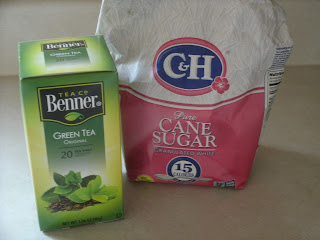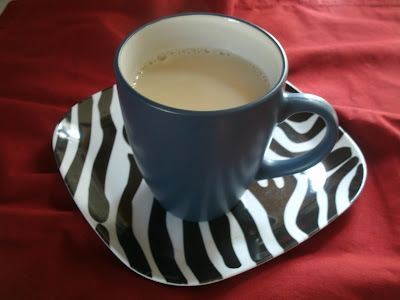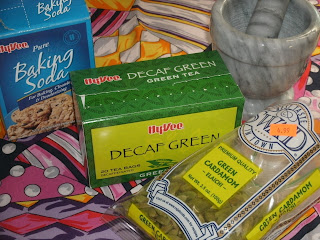Kenya
Kenya
When I was in college, I wanted to study abroad, but I didn't think that I could afford to. I also didn't think that I had the time to study abroad. The only model I knew was taking a semester abroad, and the classes might not exactly line up to the curriculum you had to complete for your major. I promised myself that I would finish college in 4 years because I couldn't afford to pay for anything longer than 4 years. To be honest, without student loans, I couldn't afford to pay for any college at all.
My perception of study abroad changed when I went to one of my boring, seemingly irrelevant, yet required, gen ed classes. The history of the college of family and consumer sciences. Yes, that class (and in the end, my major) was just as lame as it sounds. But I went to every class, because I paid for them. As an added bonus, I didn't have to read the book if I just showed up and listened. One day, we had guest speakers talking about study abroad. That's when I learned that study abroad didn't have to be an expensive semester abroad when I can't work and earn money. Study abroad could be a half summer session, or even the week over spring break. One of the destinations was Kenya. I fell in love with the program (take classes at a university 4 days a week, and travel on 3 day weekends). We were the first group to go. We were the experimental group. This trip is also when I learned to like tea. This is why I have spent years looking for good Kenyan tea in the states. Until recently, I have not been successful in finding it. Above is a cup of black Kenyan tea. They actually prefer to serve tea with milk and a lot of sugar, but I could get plain where we had our breakfast, and that is how I prefer to drink it.
When I left on my trip, I did not like tea, but I figured that I would learn to cope. Adding sugar and milk to the tea sounded like a good way to start drinking it, and for the first few cups of tea I had, this was the way I preferred to drink it. Then one day, the amount of sugar got to me. I could feel my gag reflex trying to decide if it wanted to kick in. I switched to drinking my tea plain, or with milk only when I could. I can't say that I enjoyed the plain tea at first, but it was wet, and it sounded better than dehydration or dysentery. Contaminated water is a major cause of death for children under 5 years old, and yes, children there drink tea, too.
Over time, I got used to the plain tea. It was a welcome respite from sweet, overly fizzy drinks, and the dusty bottles of water that we bought in town and hoped were bottled by a reputable company (or were so old all the harmful bacteria had died of old age). The elevation of campus was about a mile high, so the atmosphere was thinner, and soda seemed to fizz a lot more than what we were used to. Don't get me wrong, they had some very nice flavors of Fanta (passion fruit and black currant were my favorite), but I've never been much of a soda drinker.
One of our weekend trips was to the Chemogo tea plantation near the city of Kericho. The plantation was set up so the workers lived there. There was a meeting hall for social events, a health center, and a school (in addition to houses where employees lived with their families). Kericho is in the western highlands, and is a well known tea growing region. We learned about growing tea bushes, how the tea was plucked, how the bushes were groomed, and how the tea was processed to its final product. It takes several years from when tea plants are planted to when they start producing a usable crop. Per some resources I have found online, the older the tea bush, the better the tea. Kenya's tea culture is about 100 years old now. Tea was introduced by British colonial farmers. Even though there seem to be more stories about coffee growers in our culture - Karen Blixen's "Out of Africa", and the British show "As Time Goes By", tea has become a thriving industry there.
While we have explored Kenyan black tea in a couple of posts already, I decided to investigate a new product coming from Kenya. Apparently there are some small tea plantations that are experimenting with producing different types of tea. I passed up the oolong tea as it was described as tasting like a weaker version of the black tea, and instead opted to buy some green tea. For today's post, we are comparing Kenyan green to China green and gunpowder green.
The leaves from Kenya (far right) are the largest, and most complete.
I'm getting a lot of use out of my Turkish tea cups. They are the largest set of matching cups I have. First I opened the leaves by soaking in some hot water in the saucer. Then I placed them in the cups and added the hot water to brew (as usual, each cup is marked on the bottom).
Then I strained into cups. I don't have a picture, but I placed the cups on a tray and spun it around until I couldn't remember which cups were which. Well, kind of. The color was a bit of a hint.
All 3 teas had a very light scent.
The gunpowder green had a slightly smoky flavor. That is to be expected from the way it is processed.
The China green tea did not have a smoky flavor, but had a smooth, bold flavor.
The Kenyan tea had a very light flavor, and a different smell. It has more of a sweet, vegetable scent.
While the Kenyan green tea wasn't exactly impressive in the first cup, I knew a first brewing comparison wasn't really fair. A high quality tea is good for more than one brewing, and the flavor changes over time. I brewed again.
The gunpowder tea had a very vague smoky flavor in addition to a weaker flavor overall on the second brew. It was useless on the third brew. I would really only use that tea for one brewing as it rapidly lost its flavor.
The China green tea was good for multiple brews, and tasted exactly the same each time with a slightly diminishing flavor.
The Kenyan green was strongest on the second brew, and the flavor and character of the tea changed with each brewing. Overall, I discovered that I could brew the same leaves 6 to 8 times before they really seemed spent. When I was done brewing for the day and wanted to keep the leaves, I just let the leaves dry out, and stored them somewhere cool and dark after they were completely dry. The tea has a nice, mellow flavor, and the scent made me crave a salad for breakfast. This tea is very different from the green teas I have sampled from China. While the plant used to make all teas is the same, the flavor is very different depending on where it is grown, and how it is processed. I hope that more Kenyans have a chance to taste their green tea, because it is really good. This one is definitely going on my list to buy again if it is available.
Another type of tea that they are producing is purple tea. What? I wasn't familiar with purple tea. I don't have a pictures of it, but I had a chance to sample it at a local tea shop. It has a very pleasant, delicate flavor (no astringency or bitterness), and is light pink in color. I was told that adding an acid, like lemon, makes it turn a brilliant pink color. They hadn't tried adding a base to see if it would turn blue (like the red cabbage juice pH tests). I had to do a quick Google search to see how this was made. Apparently this is a specialty product from Kenya. Being in the mountains near the equator means the plants get a lot of UV exposure which helps develop this tea. They also use a plant with a mutation that makes the leaves darker (purple). Here are some references: The Whistling Kettle, NPR. Both articles have some great pictures of the tea leaves, and the brew. While it sounds like there were some purple tea plants growing in the region in 2000, I never saw any (that I knew of). We did see coffee plantations (I don't remember much about them, we didn't get out of the bus to look at the plants up close), and we passed a bamboo forest (unfortunately at night, all I got was the impression of a lot of sticks). We did, however, get to walk around in a tea field to touch and learn about the plants. So in closing, enjoy a couple of snapshots from Kericho.
As you may have guessed, these are college students in the foreground. You can see the workers on the left. The plant sticking up in the middle of the picture is intentional. It is a marker. It's not a weed, they just let one branch of the tea bush get taller than the others when they were grooming the field. The top of the bushes is referred to as the plucking table, and workers lay a bamboo cane down on top of the bushes to make sure that they keep the plucking table even, and level as they work.
I think this picture makes a good case for the purple tea. I look at it and remember just how punishing the sun was. This was actually a little further south from the equator than campus was.









Yesterday a friend came to visit. She loves cold teas and wanted to go to a bubble tea shop her coworkers recommended, so I was AT a tea shop yesterday. I didn't try anything, though, and she didn't like what her coworkers had recommended, so it was kind of a bust.
ReplyDeleteI haven't tried bubble tea, and I really don't intend to. Its been around IC for years (thanks to the popularity of the U with Asian students), but in my opinion, it's hardly tea. They use large pearl tapioca that has been cooked, then soaked in sugar syrup. Then they add sweetened condensed milk, and oh yeah, a little bit of strong tea. I think there might be some extra sugar added, and possibly some flavored syrups as well. That's not tea, that's dessert. I was also at a tea shop yesterday. That's where I tried the purple tea, so it's a good think I didn't post this until today!
DeleteYeah-- bubble tea has been here for a long time too. Lisa just never tried it because she thought it would be too sweet and she doesn't particularly like tapioca, but her coworkers talked her into it. (It was too sweet, and she said the tapioca pearls were like snot.)
DeleteThose bags of tapioca pearls also come with warnings about choking. That's another reason I stay away from it. Granted, they just say that children under 4 should not consume them, and adults should be "careful", but no, I don't want to die from drinking a cloyingly sweet calorie bomb marketed as tea.
DeleteI will admit to getting a bag of green tea flavored tapioca pearls just to see what they were like, but I ground them up in the blender before cooking them. They didn't taste particularly like tea to me, but it was fun to try something new.